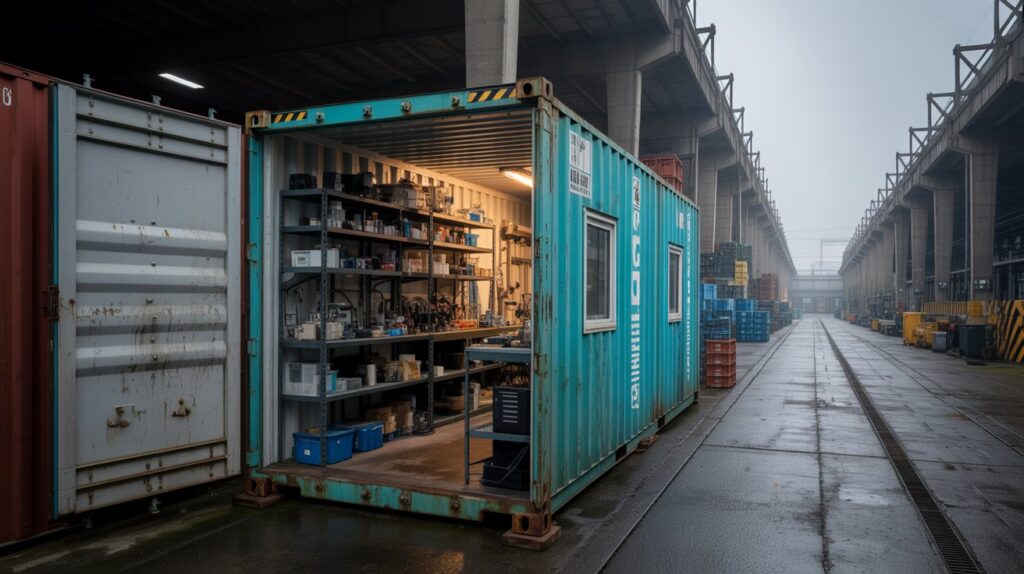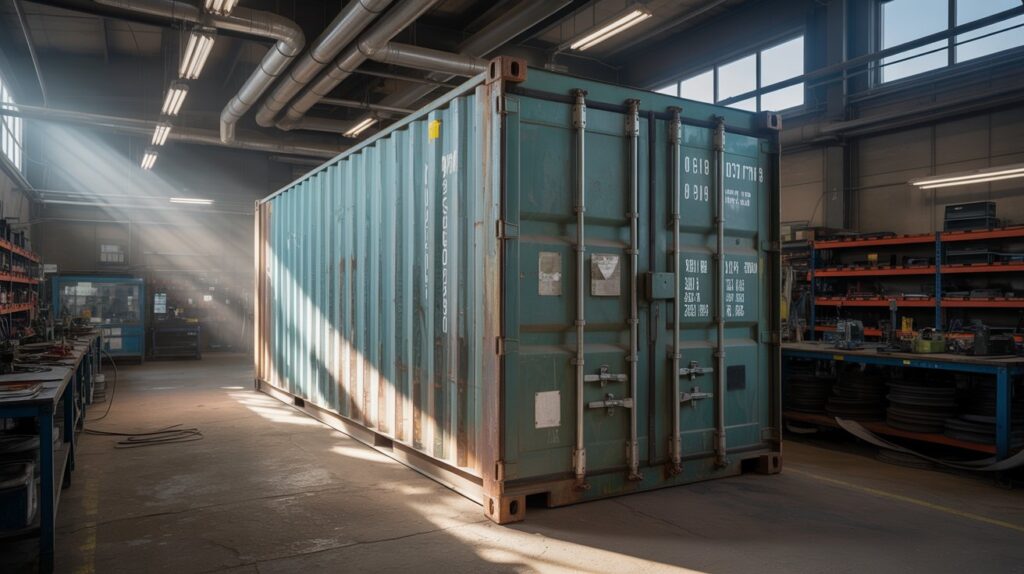Have you ever wondered what shipping containers are made of? These massive structures are vital to global trade, yet they often go unnoticed in our everyday lives. Despite their ubiquity, few people take the time to consider the materials that make up these incredible units.
Shipping containers are primarily made of steel, which is chosen for its strength, durability, and resistance to the harsh conditions often encountered during transport. The most common type of steel used in the construction of shipping containers is corten steel, also known as weathering steel.
The Importance of Shipping Containers
Before diving into the materials, it’s essential to recognize the role shipping containers play in the modern world. Since their inception in the mid-20th century, shipping containers revolutionized global trade. Cargo that once took weeks to handle now moves efficiently between ports, significantly impacting the supply chains of various industries. The standardized sizes and shapes allow for compatibility with different modes of transportation, including ships, trucks, and trains. It’s no surprise that understanding the composition of these containers can provide insights into their pivotal role.
Steel: The Backbone of Shipping Containers
Corten Steel: Weathering Steel
The primary material used in the construction of shipping containers is steel, specifically a type called corten steel. This material is often referred to as weathering steel because of its ability to form a protective layer of rust that prevents further corrosion. When exposed to the elements, corten steel actually becomes stronger over time, making it ideal for shipping containers that often face harsh environments at sea.
The unique quality of corten steel lies in its chemical composition. A distinctive mixture of alloys including copper, chromium, nickel, and phosphorus contributes to its weather-resistance quality. While it may develop a rusty appearance, the structural integrity remains unaffected. This transformation not only enhances durability but also reduces maintenance needs.
High-Tempered Tensile Steel
Although corten steel is the standard, some containers utilize high-tempered tensile steel for enhanced strength. This type of steel undergoes a special heating process, resulting in improved tensile strength and flexibility. This characteristic is essential for withstanding dynamic loads during transportation across rough seas and bumpy roads.
Both types of steel contribute to the overall resilience of shipping containers. Their ability to withstand harsh conditions and heavy loads ensures the safe delivery of goods worldwide.

The Inner Structure: Flooring and Walls
Wooden Flooring: The Foundation Within
Inside most shipping containers, you will find wooden flooring, typically made from durable hardwoods like bamboo or plywood. These materials are chosen for their strength and ability to withstand heavy loads. In addition, wooden floors offer a non-slip surface, essential for stable cargo handling.
The wood is often treated with pesticides to ensure it remains free of pests that may cause damage or infestations. This treatment is crucial for cargo shipments across different countries to prevent any ecological imbalance due to foreign insects.
Walls and Insulation: Ensuring Safe Cargo Transport
While steel forms the outer shell, insulation plays a crucial part in the container’s inner structure. Insulation materials often include polyurethane or polystyrene foam, which help regulate the internal temperature and prevent condensation. This feature is vital for transporting sensitive goods like electronics, pharmaceuticals, or perishable items.
The walls of the container may also have a layer of enamel paint, not just for aesthetics but as an additional barrier against environmental factors. This multi-layered structure ensures that goods remain secure and uncompromised throughout their journey.
Advancements and Alternatives in Material Use
Today’s shipping container industry is not static. Continuous advancements aim to improve efficiency, durability, and environmental friendliness.
Aluminum: Lightweight and Corrosion-Resistant
Some manufacturers have begun using aluminum instead of steel due to its lightweight nature and high resistance to corrosion. This material is beneficial for air transportation where weight considerations are crucial. However, the high cost of aluminum compared to steel often limits its widespread use in standard containers.
Fiberglass: An Emerging Player
Fiberglass is another material gaining attention due to its lightweight and rust-resistant properties. However, fiberglass containers are typically used for special purposes rather than standard cargo transport. They offer good thermal insulation, making them ideal for refrigerated or insulated containers.
Sustainability and Eco-Friendly Innovations
With increasing concerns about environmental impact, the industry has turned toward sustainable innovations. Composite materials and recycled plastics are being explored as potential alternatives to traditional steel containers. These materials not only reduce environmental strain but also offer promising advances in durability and versatility.
The Lifespan and Lifecycle Management of Shipping Containers
Longevity Factors
The lifespan of a shipping container generally ranges from 10 to 15 years, heavily dependent on maintenance and environmental exposure. Made largely from robust materials such as corten steel, these containers are built to last. However, managing their lifecycle involves routine inspections for wear and tear, specifically focusing on rust and joint integrity.
Repurposing and Recycling
Once a shipping container reaches the end of its useful life in the logistics field, it doesn’t necessarily mean the end of its journey. Containers can be repurposed into storage units, homes, offices, and more. Their robust structure makes them ideal for innovative recycling and reuse.
Additionally, steel is highly recyclable, offering an excellent avenue for reducing waste. By melting down and re-forming steel, manufacturers can produce new containers, effectively minimizing the environmental impact while supporting sustainable practices.
Considerations for Choosing Container Materials
Cost-Effectiveness
The choice of material can significantly impact the cost of the container. Steel, despite being heavier than alternatives like aluminum, remains the most cost-effective due to its abundance and recyclability. For long-term use, investing in weather-resistant corten steel proves financially prudent.
Environmental Conditions
The material choice also depends on the environmental conditions the container will face. Steel and aluminum are preferred for harsh sea conditions due to their strength and corrosion resistance, whereas materials like fiberglass may find preferable uses in less demanding scenarios.

Specific Use Cases
Tailoring the materials to specific use cases is crucial for efficiency. Refrigerated containers (reefers) benefit from enhanced insulation materials, while lightweight options like aluminum may be ideal for air freight. By understanding these nuances, you can make informed decisions on container purchases or rentals.
Shipping containers are fascinatingly complex, more than just steel boxes transporting goods across oceans and continents. These marvels of engineering are constructed with materials chosen for their durability and practicality, ensuring the global flow of commerce remains unimpeded. By gaining insight into their composition, you achieve a deeper appreciation for their vital role — one that seamlessly intersects engineering, logistics, and sustainability.
Whether you are in the logistics field, considering purchasing a shipping container, or simply interested in the intricacies of modern trade, understanding the material composition of these containers is a valuable endeavor.

